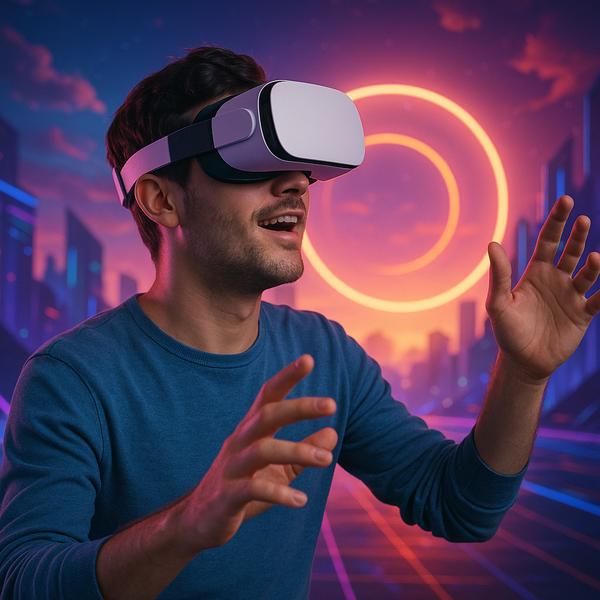
Virtual reality (VR) is rapidly transforming how we interact with digital content and the world around us. Moving beyond traditional screens, VR places users directly inside immersive computer-generated environments. This cutting-edge technology is no longer confined to science fiction, offering a diverse range of experiences from breathtaking gaming adventures to powerful educational tools and innovative professional applications.
Understanding Virtual Reality Technology
At its core, virtual reality relies on hardware designed to trick your senses, primarily sight and sound, into believing you are in a different place. The most recognizable component is the VR headset, which typically contains screens and lenses that display a stereoscopic image, creating a sense of depth. Headsets also include sensors to track your head movements, allowing the virtual environment to respond naturally as you look around. Many systems also incorporate hand controllers or other tracking devices to allow interaction within the virtual space.
Types of VR Headsets
The VR market offers several types of headsets, catering to different needs and budgets. Tethered headsets, like the Valve Index or older Oculus Rift models, connect to a powerful PC, offering high fidelity graphics and performance. Standalone headsets, such as the Meta Quest series, are self-contained units that don't require external hardware, offering greater freedom of movement and ease of use. Mobile VR, which uses a smartphone inserted into a viewer (like Google Cardboard or Samsung Gear VR, though less common now), provides a more basic, accessible entry point.
Immersive Applications Across Industries
Virtual reality's potential extends far beyond entertainment. While gaming remains a significant driver, VR is making waves in numerous sectors. In education, it allows students to virtually visit historical sites, explore the human body, or conduct complex science experiments in a safe environment. Medical professionals use VR for surgical training, pain management, and therapy. Architects and designers utilize it to walk through virtual models before construction begins. Even industries like manufacturing and retail are exploring VR for training simulations and unique customer experiences.
VR in Entertainment and Gaming
For many, virtual reality is synonymous with gaming. VR games offer an unparalleled level of immersion, allowing players to feel truly present in fantasy worlds, intense action sequences, or intricate puzzles. Beyond traditional gaming, VR enables social experiences, allowing users to connect with others in virtual spaces, attend virtual concerts, or explore digital worlds together. Interactive entertainment like virtual tours of real-world locations or cinematic VR experiences that place you inside a story are also becoming increasingly popular.
Key Components and Accessories
A complete VR setup often involves more than just the headset. Controllers are crucial for interacting with the virtual environment, typically allowing you to grab objects, point, or move. Full body tracking systems can enhance immersion by tracking your arms, legs, or torso. Haptic feedback devices, like vibrating vests or gloves, can add the sense of touch to the virtual experience. Accessories like specialized headphones or external cameras (for some tracking systems) also play a role in refining the user experience.
The Future of Virtual Reality
The field of virtual reality is constantly evolving. Future developments are expected to bring higher resolution displays, wider fields of view, and more comfortable and lighter headsets. Advancements in tracking technology may allow for more precise finger and body tracking without external sensors. The convergence of VR with augmented reality (AR) and mixed reality (MR) is also anticipated, blurring the lines between the physical and virtual worlds and opening up even more possibilities for interaction and application. As content libraries grow and hardware becomes more accessible, virtual reality is set to become an even more integrated part of our digital lives.
Exploring virtual reality opens doors to experiences previously confined to our imaginations. From entertainment and gaming to vital professional training and educational opportunities, VR offers unique perspectives and immersive interactions. As the technology continues to mature, its potential to reshape various aspects of society becomes increasingly apparent, promising a future where the line between the real and virtual world is increasingly blurred.